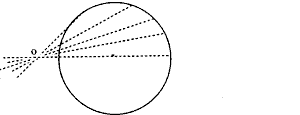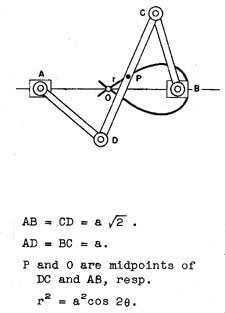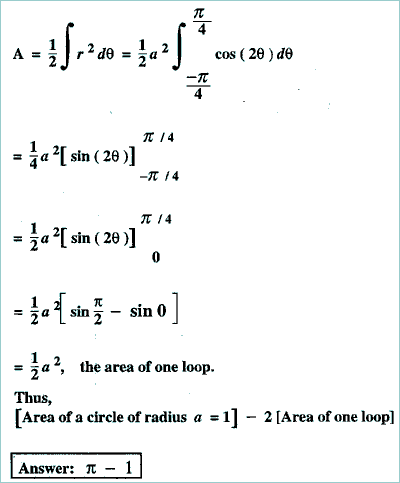 Jakob Bernoulli (
1654 - 1705 )
Jakob Bernoulli (
1654 - 1705 )
(James, Jacque, Jacob)
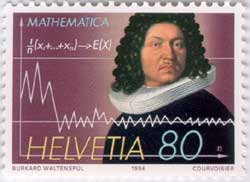
The Swiss stamp issued in 1994
honoring James
Bernoulli. Note the formula for mathematical expectation.
Today, the
Basel phone book lists many Bernoullis and family members are still on
the faculty of the University.
|

In 1694 James Bernoulli (left)
published a curve in Acta Eruditorum that he described as
being "shaped like a figure 8, or a knot, or bow of a
ribbon." Following the protocol of his day, he gave this
curve the Latin name of lemniscus, which translates as a
pendant ribbon to be fastened to a victor's garland. He was
unaware that his curve was a special case of the Ovals of Cassini.
His investigations on the length
of the arc laid the foundation for later work on elliptic
functions. But his most important contributions were in
probability. We still use the terms "Bernoulli trials" and
"Bernoulli numbers" as first suggested in his great classic ArsConjectandi.
For example, he included the Bernoulli number of the
sum of the 10th powers of the first 1,000 integers to be
91,409,924,241,424,243,424,241,924,242,500.
He wrote that he calculated this
in "half of a quarter of an hour."
James joined with his younger
brother, John (right), in recognizing the importance of Leibniz's
highly abbreviated analysis of infinitesimals. In the late 1600s
this trio produced almost all of what we now call elementary calculus
as well as the beginnings of ordinary differential equations.
John contributed the name "integral calculus."
John's name is also associated
with two other famous curves, the brachystochrome and the
catenary. Unfortunately, he is also remembered for an arrogant
personality and the harsh treatment of his son, Daniel. Daniel
won an important prize given by the French Academy, a prize his father
thought he should have received.
A fourth Bernoulli, Nicholas, was
the first to state the St. Petersburg paradox. He was also a
nephew of James. Today we experiment with this paradox as Buffon's
Needle, using computer and graphing calculator programs.
The Bernoulli family of
distinguished mathematicians and scientists is virtually synonymous
with the city of Basel in Switzerland.
Though at times dysfunctional in centuries past, the family has
remained a significant contributor to the life of the University.
The Bernoullis are our most important mathematical dynasty.
The spiral Jakob (James)
requested be on
his tomb.

Eadem mutata
resurgo.
I shall arise the
same though changed.
|
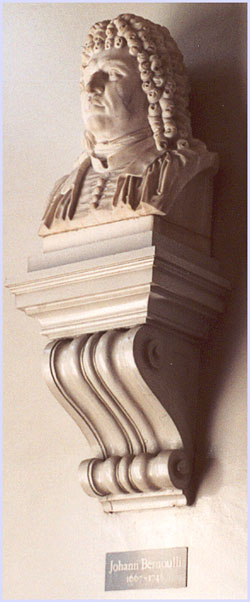 Johann Bernoulli (1667 - 1748
)
Johann Bernoulli (1667 - 1748
)
(John, Jean)

For a slide show of
mathematics sites in
Basel
click on Eulerstrasse above.

For an enlarged 18th century
image of John
click on the above icon.
|


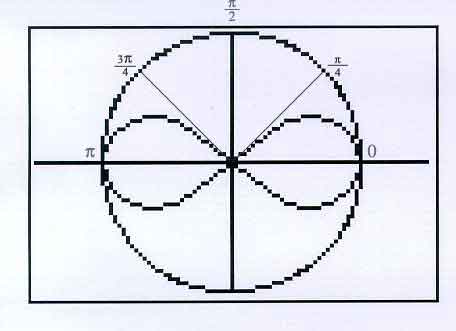

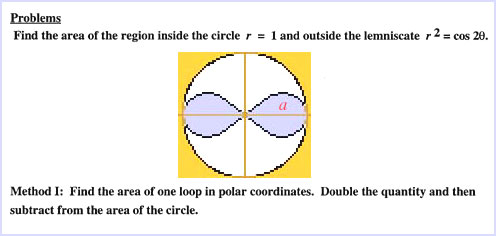



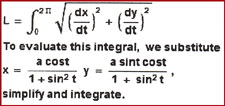 .
. 